MAZDA 創 ARATA(アラタ) とは
マツダは4月25日、北京モーターショーにおいてEZ-6の発表と同時に中国向け新型電動車第2弾の「MAZDA 創 ARATA」コンセプトモデルをお披露目した。こちらは2025年量産予定のSUVである。
諸元値などは一切発表されていないが、「創 ARATA(アラタ)という名前には、マツダが新時代を新たに創るという願いが込められています。モダンかつプレステージアスなスタイリングをもつこのクロスオーバーSUVは、進取の気性に富んだ中国のお客様に向けたデザイン提案です。「MAZDA EZ-6」と同様に、BEVとPHEV、2種類のパワーユニットを設定して、2025年中に中国に導入したいと考えています。」という発表がされた。
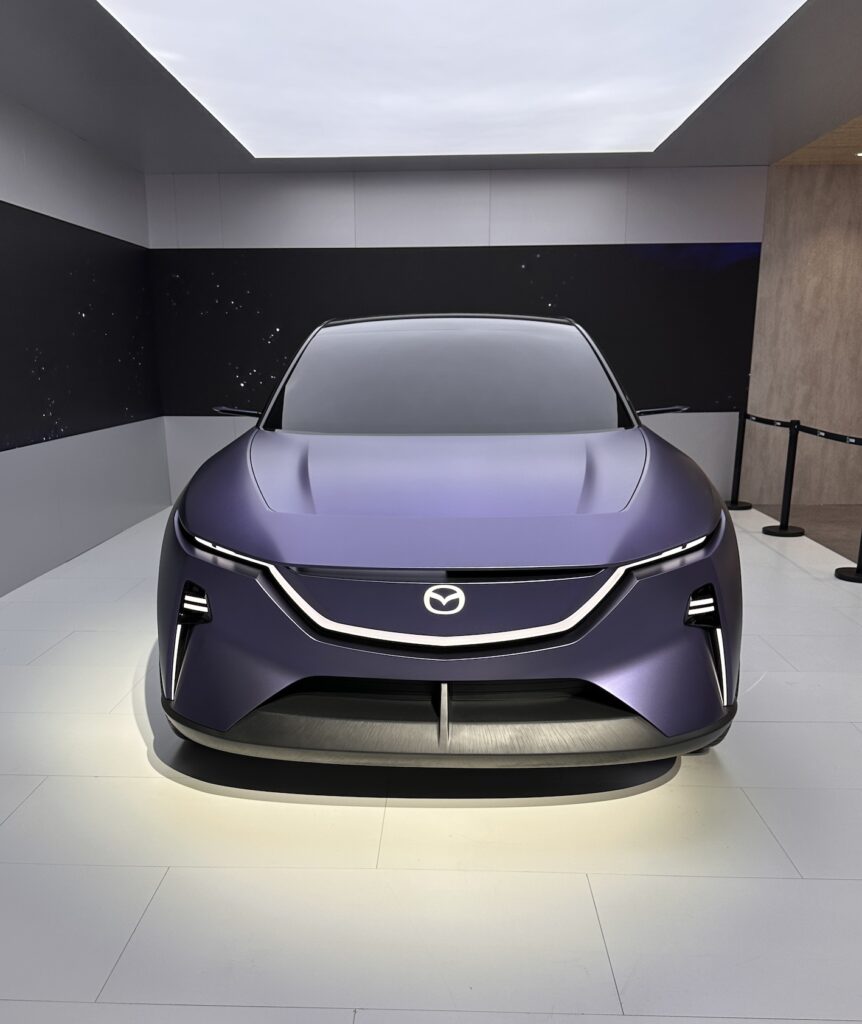
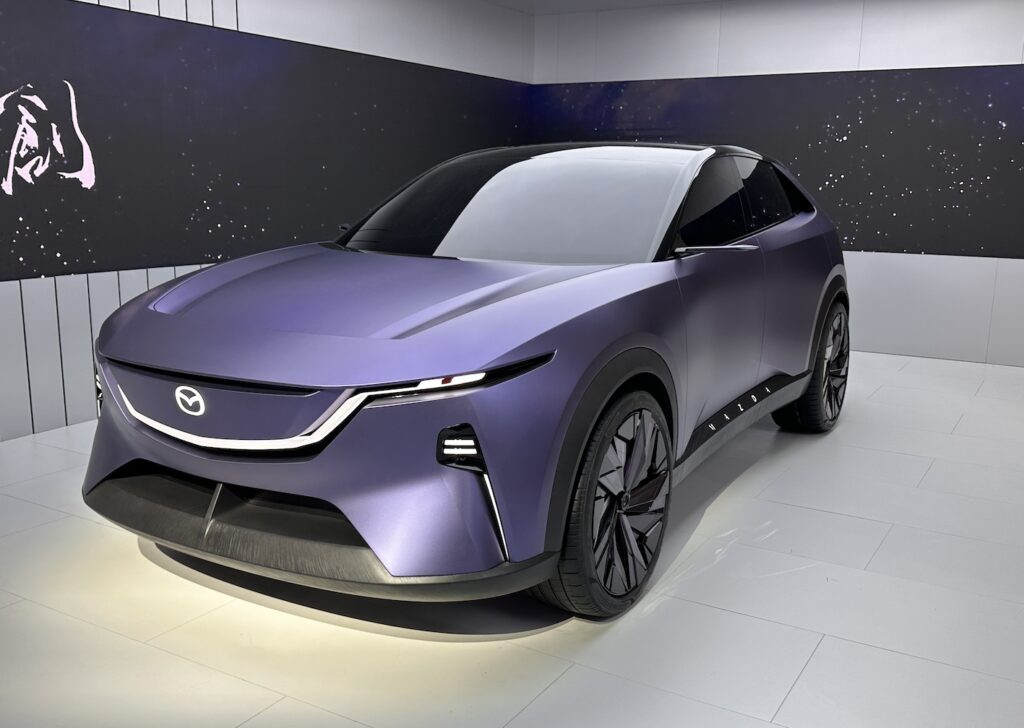
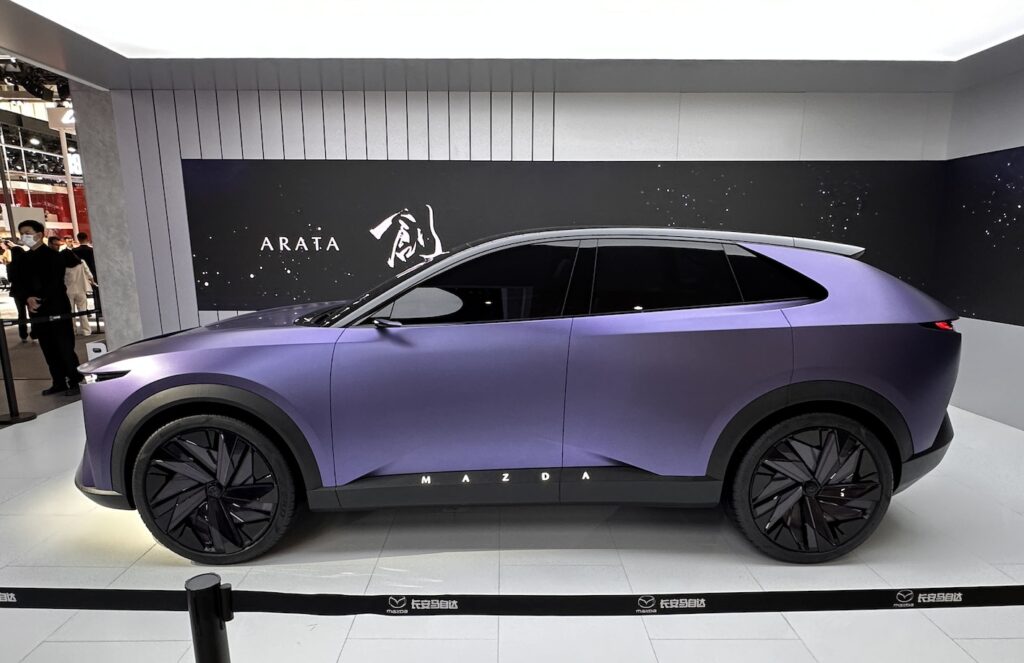
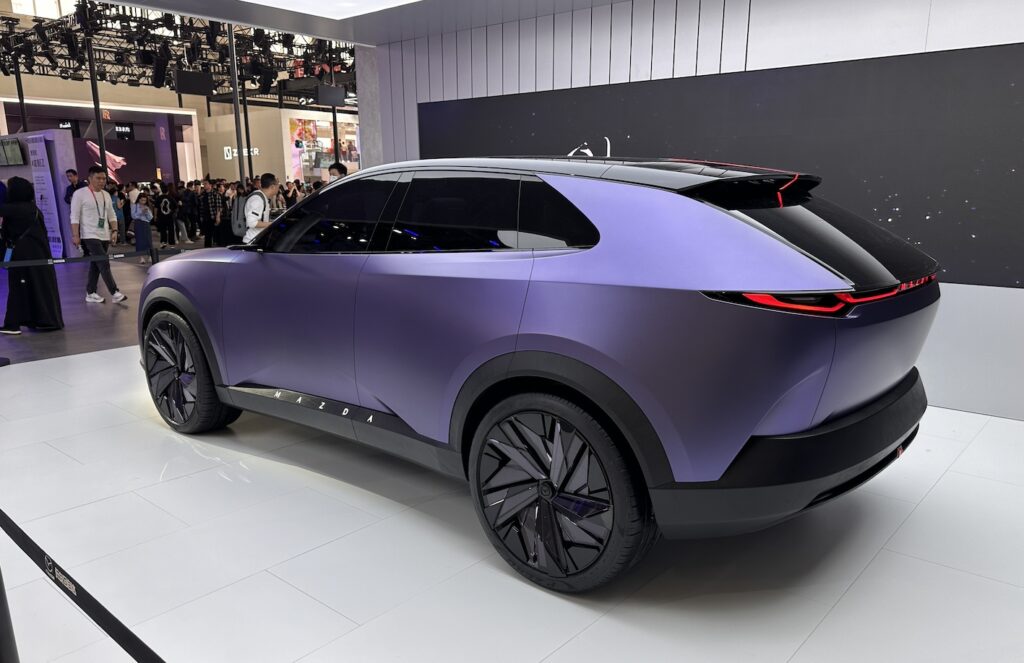
北京モーターショー会場でマツダが発表したもう1台の新型電動車EZ-6のインタビューをさせていただいた岩内義人マツダ株式会社デザイン本部チーフデザイナーのお話によれば「ARATAは木本チーフデザイナーというCX-50をやったチーフデザイナーが担当しています。マツダ2のマイナーチェンジなどもやってます」と言っておられたので木元英二さんが担当されているようだ。
さらに特徴的なCピラーについてお聞きしたところ「あれはインテークです。本当にインテークです。しかも割と本気でやろうとしているインテークで、もう一度車をよく見ていただきたいんですけど、いろんなところにインテークがついてて、グリルの上であるとか、フェンダーとか。インテークだらけの車になっているので、そういうのも着目して見てください」「やはり新しくしたいのですが、ただ単純にサーフェイスを平らにすればいいとか、カクカクさせればいい、とかっていうだけだと説得力ないですよね。モダンな新しいサーフェイスの、伸びやかな面をスパッとカットしたような形状とともに、空力とセットで使おうかと考えています」その本気度については「そうですね、色々検討中です。実験しながら、検証もしながらということになると思います」と語られている。

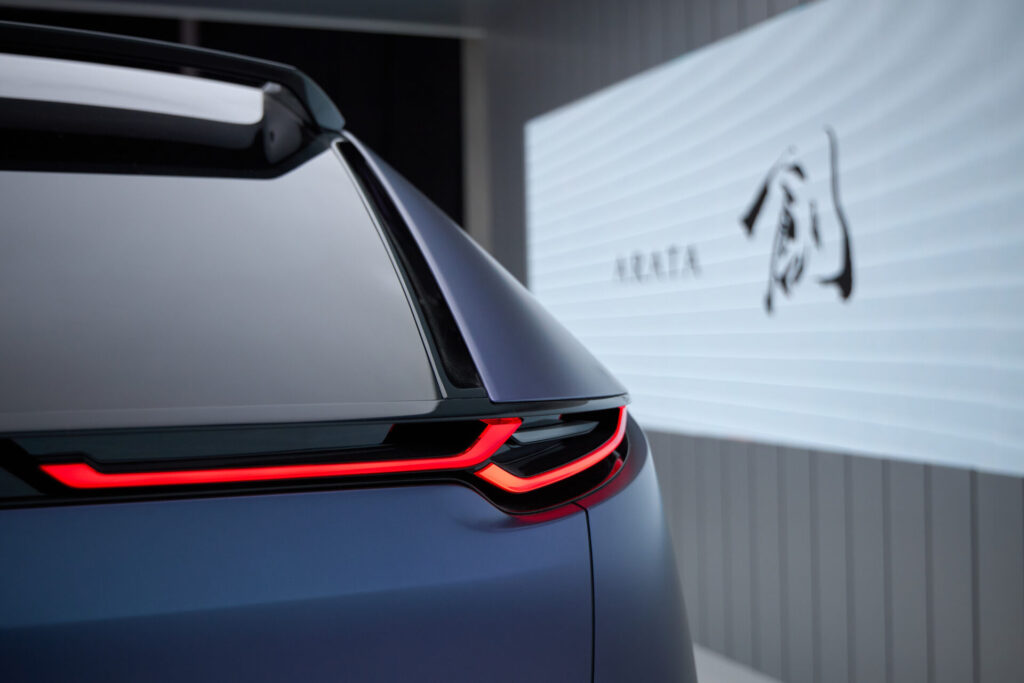
確かに車体のいろいろな場所に空気の通り道のような形状が作られている。紫色に塗られたボディパネルは、さながらバイクのカウリングのような役割と解釈してみると、なるほど面白い!
いかにも下回りの黒っぽい樹脂パートの上部にボディカウルが取り付けられているように両者の間には隙間がある(ように見える)。これは隙間をうまく活用した「隙間デザイン」と言える。実際にエアロダイナミクスとしての効果がどうあるのかは不明だがこれらが操縦安定性の向上や、電気の消費率の向上に貢献するのであれば意味も出てくるし、昨今の高性能スーパースポーツカーでは空気の流れをうまくスタイリングと組み合わせていることを考えると、ARATAでは敢えて表情を殺したサーフェイス(ボディカウル?)と空気力学の組み合わせに”新しさ”の挑戦しているのかもしれない。
さて、「創・ARATA」の造形の特徴は、SUVとしての”しっかり感”を感じさせるために厚みや幅を強調するように見せている。敢えてキャラクターラインを入れずに、強さを感じるテンションのあるサーフェイスだけで車を包んでいるのは装甲的な強さ表現の意図を感じる。
4つのタイヤを取り囲むフェンダーの表現も、タイヤの存在感を強調し、タイヤの接地感を高めている。従来のホイールアーチを取り囲むフレア処理でもなく、ブリスターフェンダーとも違う独自なスタイルを追求しているように見える。リヤフェンダーをDピラーへと直接繋いでの隙間処理などは、デザイナーがフェンダーの新しい見せ方を試行錯誤していた時に出てきたアイデアかもしれない。あるいはミッドシップスポーツカーからインスパイアされたのかもしれない。
そしてこれらの新たな造形トライが前述のカウル的構造(隙間デザイン)と組み合わさって見える姿は思いの外モダンである。



サイドビューシルエットはAピラーをいつものように後ろに引いたロングノーズだ。ボンネットの下にエンジンの入っていない電動車の時代になってもこのバランスを崩そうとしないのは、MAZDAであることの表現であり、こだわりであり、証でもあるのだろう。ここが車の全体の見え方を従来的か先進的に見せるかの重要なポイントのひとつなのだが、このバランスをキープするのがMAZDAブランドの戦略なのだと理解する。ただ、ショー会場で発表された「新エネルギー車による新しい生活様式をイメージさせるような未来的でモダンな造形」という表現との合致性をどう捉えるか。デザイナーの葛藤は続くのだろう。
2025年に期待を寄せる。
Mazda’s New Electric SUV Concept Car / ARATA Design【Beijing Motor Show 2024 Design Report_03】
What is Mazda ARATA
On April 25, at the Beijing Motor Show, Mazda unveiled the “MAZDA ARATA” concept model, its second new electric vehicle for China, at the same time as the EZ-6 was unveiled.
This SUV is scheduled for mass production in 2025.
Although no specifications or values have been announced, the name “ARATA” reflects Mazda’s desire to create a new era. With its modern and prestigious styling, this crossover SUV is a design proposition for enterprising Chinese customers. Like the MAZDA EZ-6, it will be available in two power units, BEV and PHEV, and we hope to bring it to China by the end of 2025.” The announcement was made.




According to Yoshito Iwauchi, Chief Designer of Mazda’s Design Division, who interviewed me about the EZ-6, another new electric vehicle that Mazda unveiled at the Beijing Motor Show, “ARATA is being handled by Chief Designer Kimoto, who did the CX-50. He also worked on the minor changes of the Mazda2. It seems that Eiji Kimoto is in charge of ARATA.
When asked about the distinctive C-pillar, he replied, “That is an intake. It’s really an intake.And it is really the intake we are trying to create.
Look at the car again. There are intakes in the grille, in the fenders, and in many other places. We want to give the car a new look, but simply flattening or angularizing the surface is not compelling enough. We are looking to use a set of aerodynamics with a new, modern, Smooth surface with a cut-off shape,” he says.
As for the seriousness of this idea, “Yes, we are considering a lot of things. We’re going to experiment and test it as we go along.” He also stated.

Side sill areas are likely to be impossible.

Indeed, air passage-like shapes are created in various places on the body. It is interesting to interpret the purple-painted body panels as acting, as it were, like the cowling of a motorcycle!
There is a gap between the body cowl and the black resin parts, as if the body cowl is pasted over the black resin parts of the underbody. It can be said that the “gap design” makes good use of this gap.
It is not clear to what extent this design is effective in terms of aerodynamics, but if it contributes to improved handling stability and higher electricity consumption rate, it makes sense, and considering that recent high-performance super sports cars have succeeded in achieving both air flow and styling, Body surfaces(body cowl?) that do not show expression and aerodynamics may be ARATA’s challenge to “newness”.
The characteristic of the “ARATA” shape is to emphasize its thickness and width in order to give it a “solid” SUV appearance. The car is wrapped with only a surface with a tension that gives a sense of strength, without character lines, which is intended to express the armored strength of the car.
The expression of the fenders surrounding the four tires emphasizes the presence of the tires and enhances the sense of ground contact them. It appears that the designers are pursuing a unique style that is neither the conventional flared treatment surrounding the wheel arches nor blister fenders. The treatment of the rear fenders directly connecting to the D-pillar to create a gap may have been an idea that emerged when the designers were experimenting with new ways of presenting the fenders. Or perhaps they were inspired by mid-ship sports cars.
The combination of these new formative trials with the aforementioned cowl-like structure (gap design) is unexpectedly modern.

![by Car Styling [カースタイリング]](https://motor-fan.jp/wp-content/uploads/2025/04/carstyling-jp_logo.png)
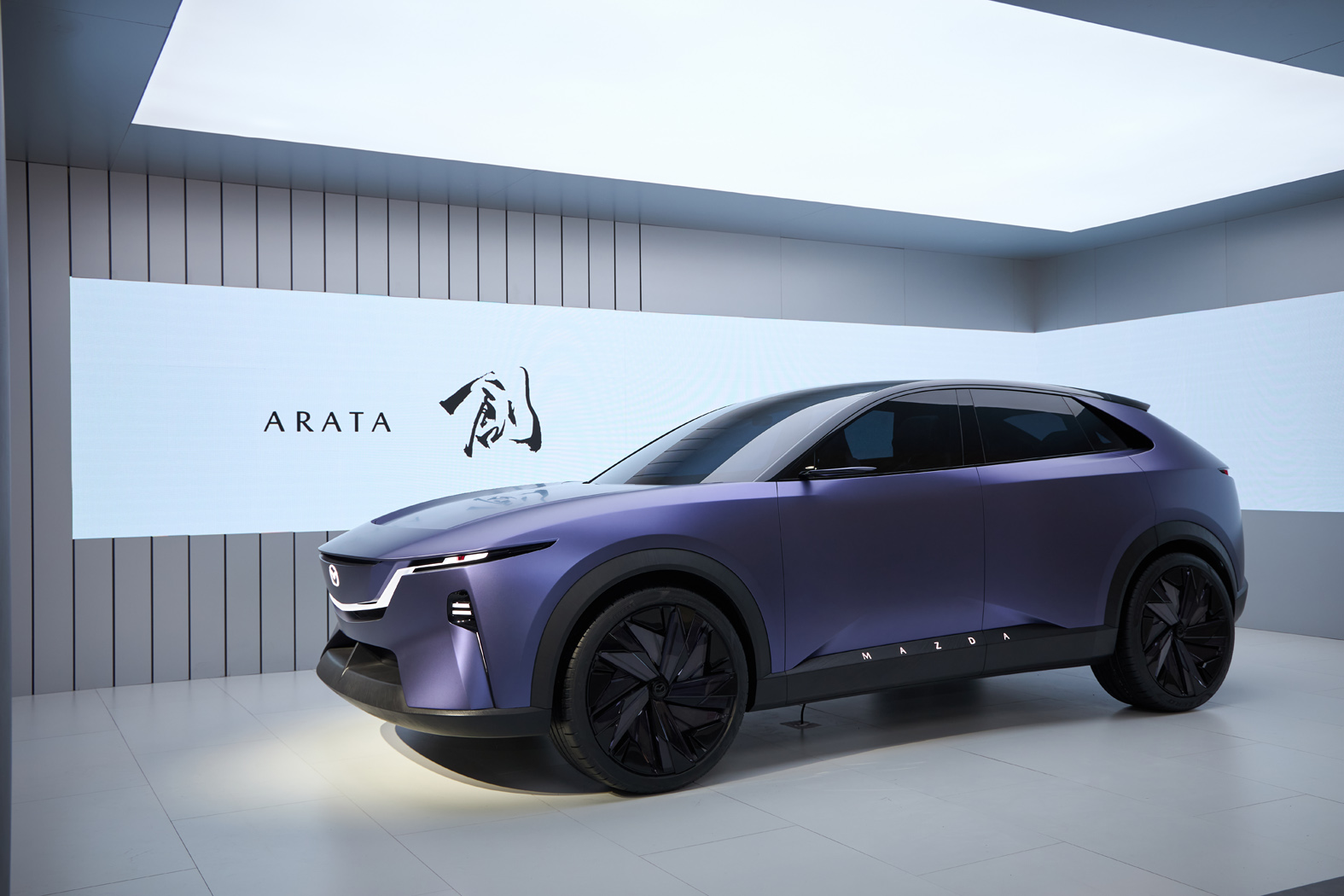
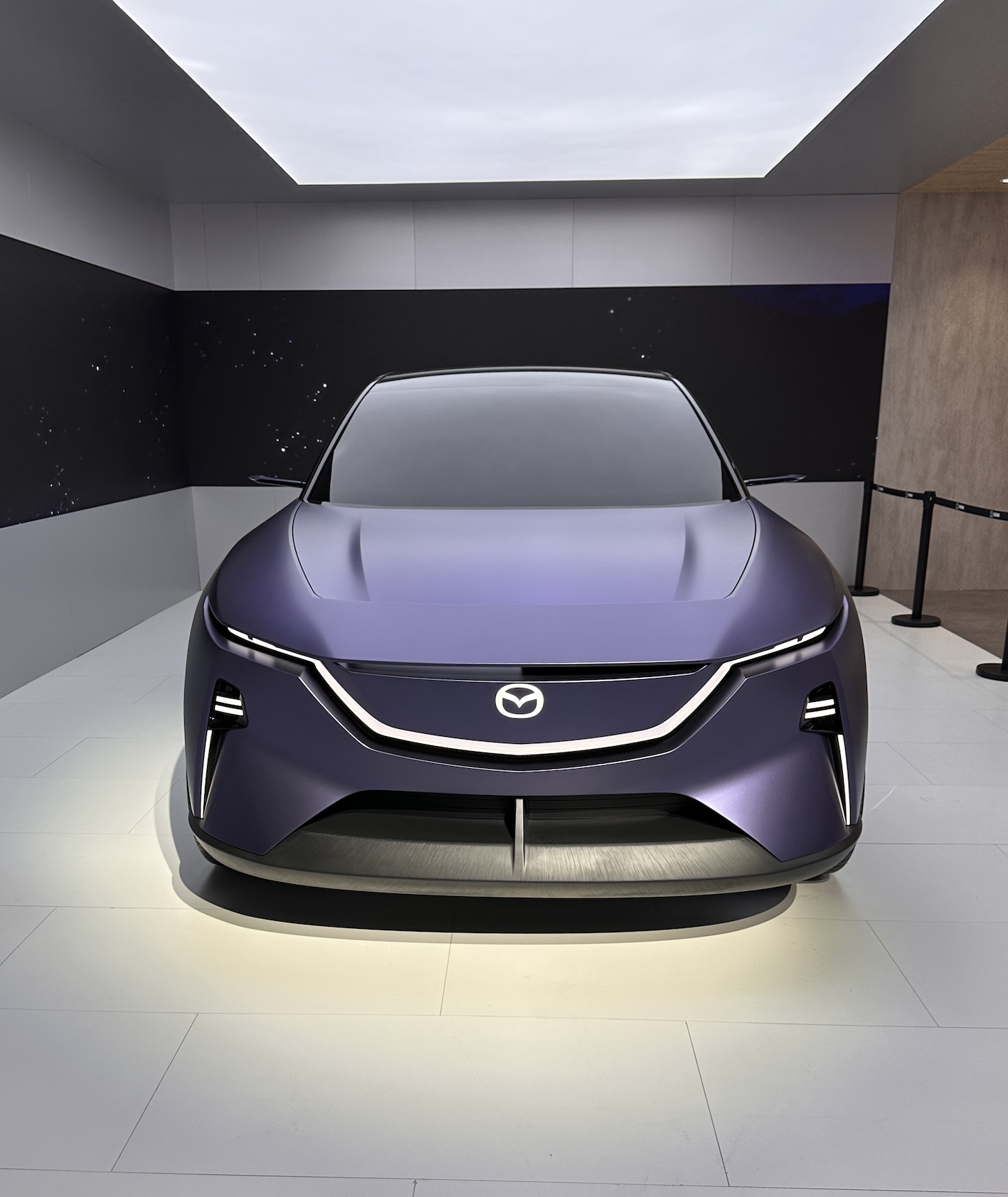
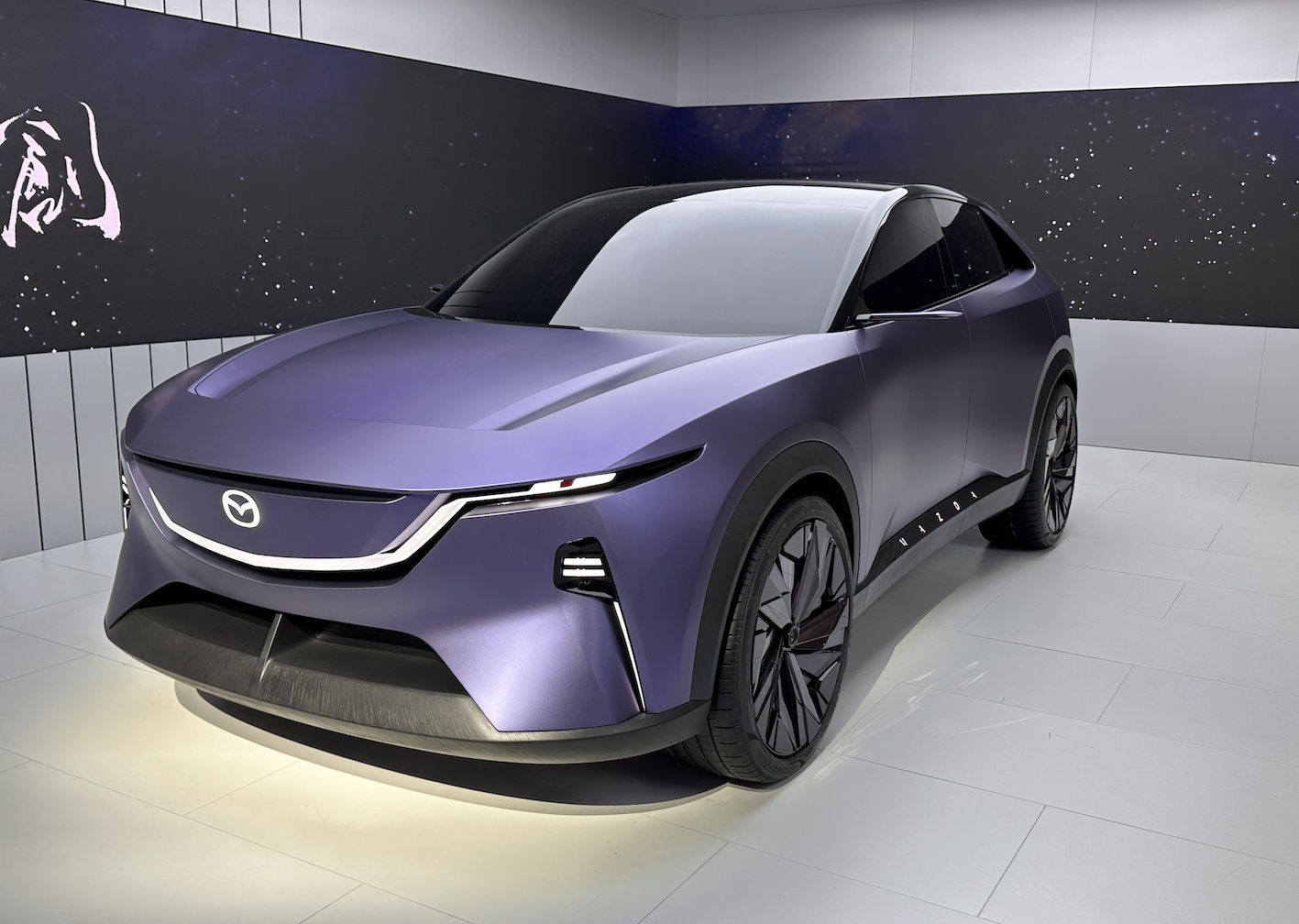
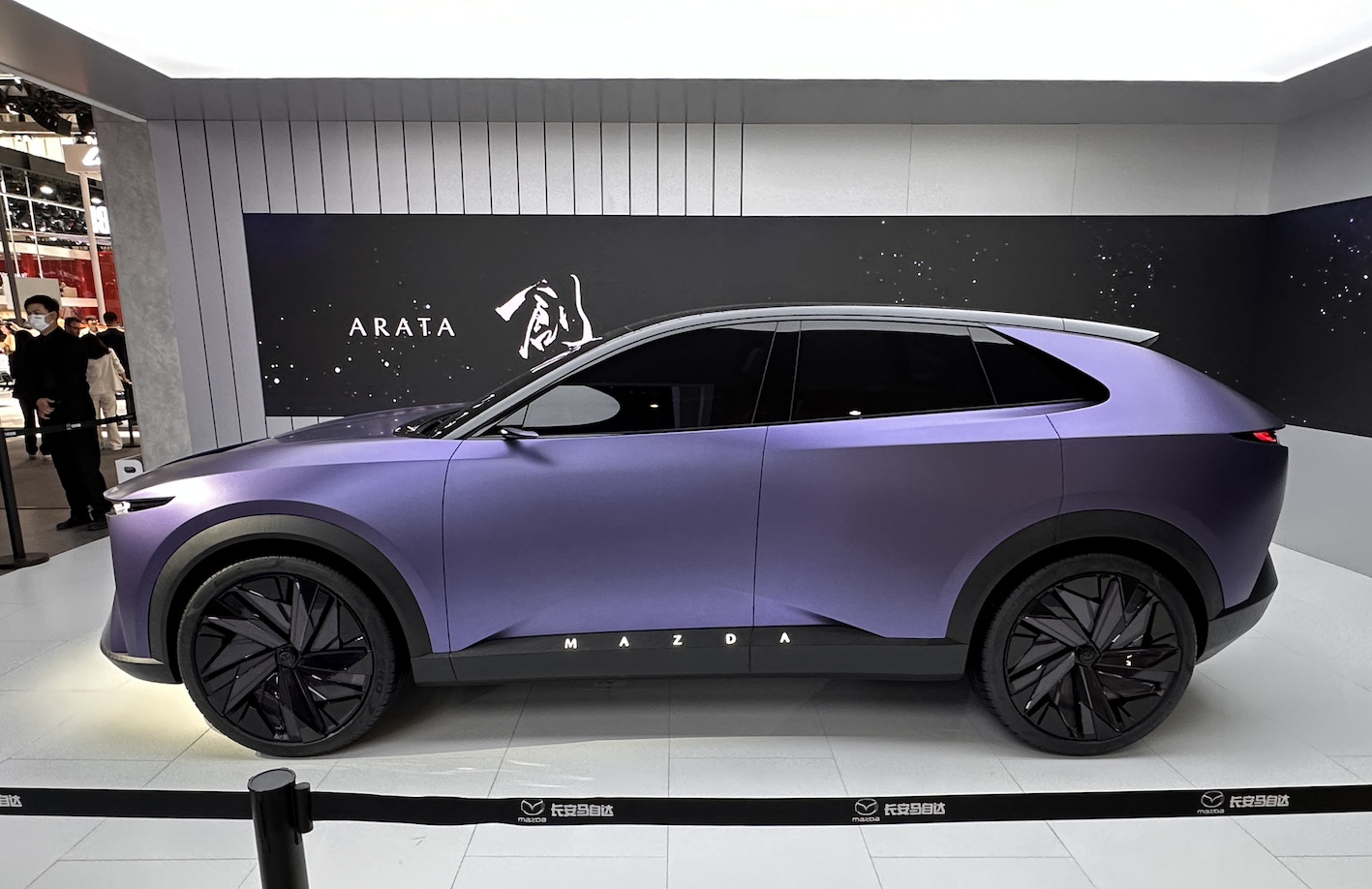


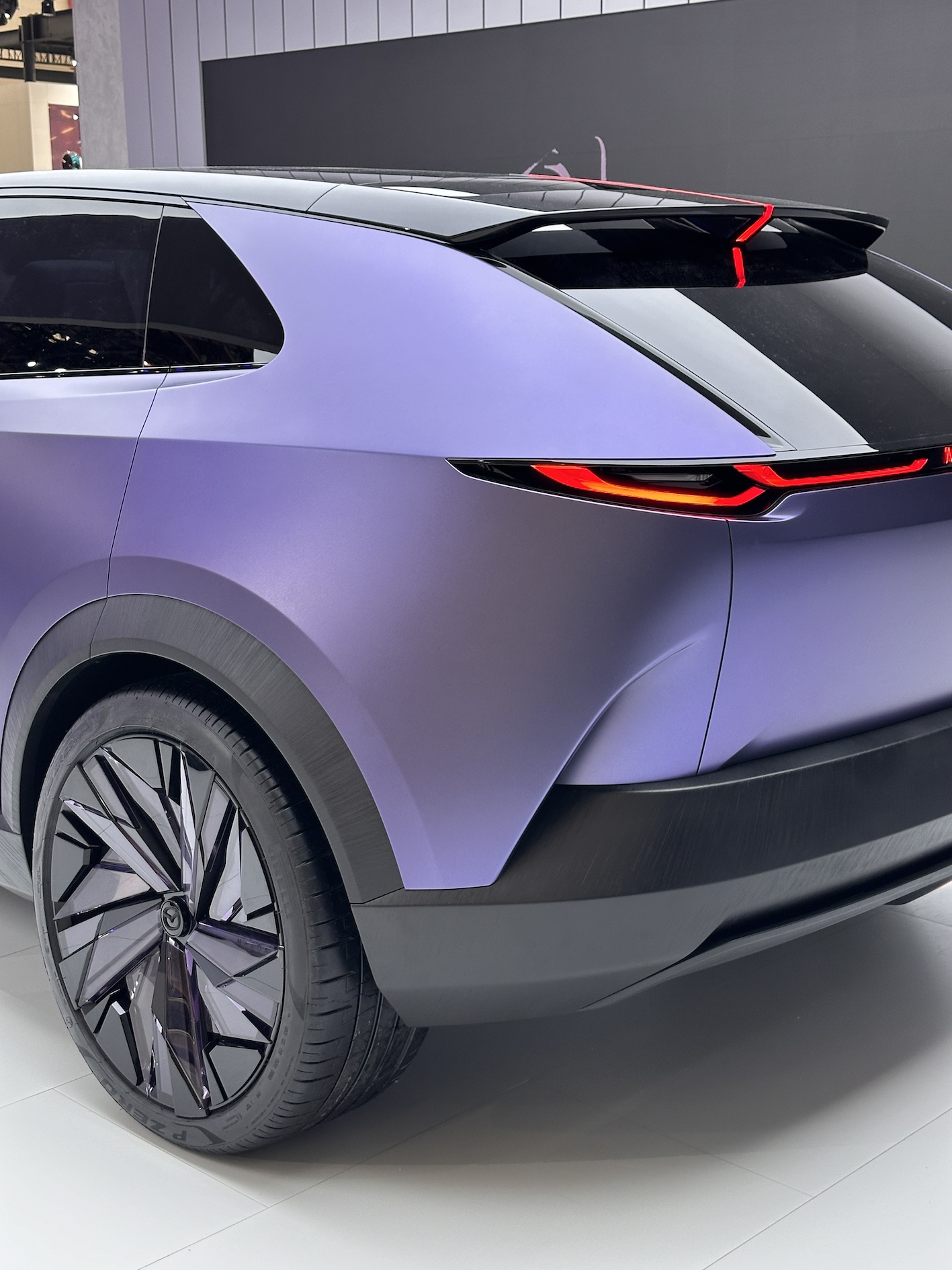


 マツダ新型電動車、EZ-6 のデザイン 【北京モーターショー2024 デザインレポート_02】MAZDA EZ-6 Design [ Beijing Motor Show 2024_Design Report_02 ]
マツダ新型電動車、EZ-6 のデザイン 【北京モーターショー2024 デザインレポート_02】MAZDA EZ-6 Design [ Beijing Motor Show 2024_Design Report_02 ]




